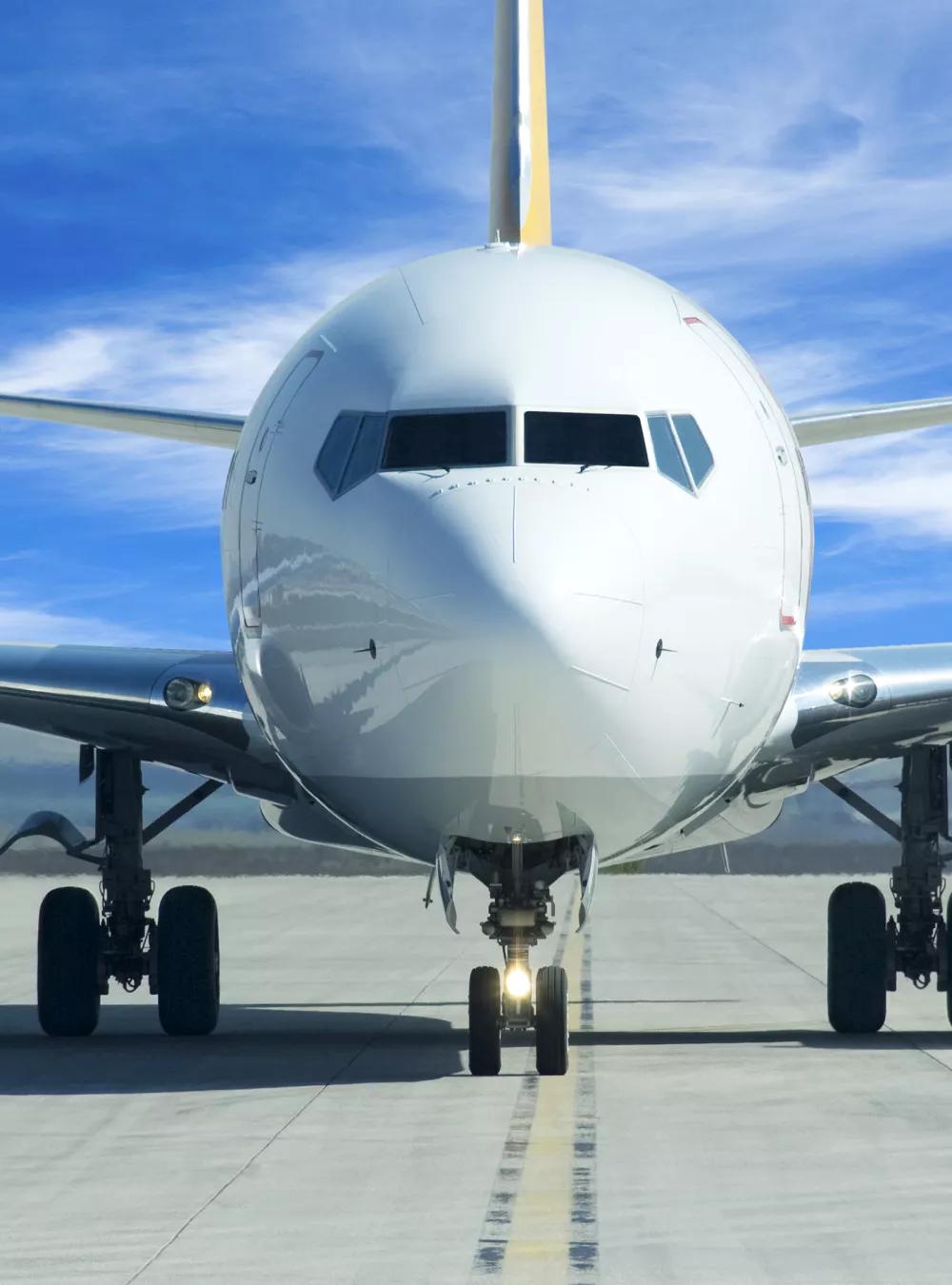Some of aviation’s biggest risks are on the airport surface. MITRE is enhancing aviation’s safety toolkit with an application designed to prevent pilots from taxiing onto a runway without permission, a scenario that poses an enormous collision risk.

Runway Safety Application Keeps Taxiing Aircraft Out of Harm’s Way
You’re a solo pilot getting ready to take off from a busy airport. The air traffic controller has given you a route to follow to your assigned runway, but now you’re dependent on paper charts and airport signs—and perhaps electronic maps of the airport surface—to navigate.
Unlike automobile drivers, you don’t have a digital device that provides turn-by-turn directions. And if you get lost and accidentally end up on the wrong runway, it can be extraordinarily dangerous. Another aircraft could be taking off or landing, creating a collision risk.
At MITRE, in the R&D center we operate for the Federal Aviation Administration, we’ve developed an application to reduce the likelihood of a pilot accidentally entering a runway without a clearance—an event known in the aviation industry as a runway incursion, or RI. The application brings turn-by-turn guidance to pilots and alerts them if they make a mistake.
Preventing Catastrophic Outcomes
“The goal is to catch any taxi errors before they escalate into an RI,” says Matthew Pollack, one of the application’s developers.
“Large aircraft can be moving at 100-plus miles per hour on the runway, and they have limited maneuverability, making it hard to avoid another aircraft that’s unexpectedly on the runway,” explains John Helleberg, another member of the development team. “At speeds like that, if a collision occurs, the outcome is catastrophic.”
For example, the deadliest accident in Italian aviation history occurred on October 8, 2001, when a business jet entered a Milan airport runway without authorization. It collided with a commercial airliner that was taking off, killing all 114 people aboard the two aircraft, along with four people on the ground.
By reducing pilot errors on the runway surface, we hope to save lives.
Providing an Early-Warning System
“One potential way to reduce these incursions is to develop systems that can digitally capture taxi instructions and employ algorithms to warn pilots if they deviate from the assigned route,” says development team member Steven Estes. “That’s what we’ve done.”
Our runway safety application runs on a tablet. To test the concept, we created a database of the taxiways, runways, and ramp areas at 65 airports supporting a mix of commercial and private operations. The application also incorporates tools pilots can use to easily enter the controller’s taxi route instructions. Added to that are sophisticated algorithms that compare the designated route to the aircraft’s movements.
“The algorithms provide turn-by-turn route guidance and can also alert pilots if they make a wrong turn or proceed past the end of their route,” Estes says. “By reducing pilot errors on the runway surface, we hope to save lives.”
Giving the Public Access
Toward that goal, we’ve given industry open access to the technology.
“Unlike a typical corporation, MITRE acts in the public interest, so we can make these safety features available to any developer interested in incorporating them into their application,” Pollack says.
ForeFlight, a leading pilot application developer, has already released a version of the taxi routing feature of the MITRE application. It’s available as part of FloreFlight Labs, a platform within the ForeFlight app that gives pilots an opportunity to test and provide feedback on new technologies.
“Foreflight’s taxi routing feature is a direct result of our research,” Helleberg explains, “and it’s the inaugural feature released via the ForeFlight Labs concept.”
Extending Our Digital Copilot Capabilities
Our runway safety application is part of Digital Copilot, a set of capabilities MITRE developed to increase safety among general aviation pilots, the majority of whom fly solo.
“Statistics show that single-pilot operations are riskier than two-pilot flights due to the high workload associated with flying solo,” Pollack says. “We developed Digital Copilot to fulfill many of the roles of a human copilot.”
At its essence, the technology is a set of software algorithms that act as a cognitive assistant to the solo pilot, reducing the pilot’s workload.
“Digital Copilot is capable of responding to spoken commands, looking up information, and providing it in a variety of formats,” Pollack adds. “Its platform is the portable technology many pilots already own and use—their smartphones and tablets—so it’s a low-cost means of obtaining added decision support and situation awareness.”
The runway safety application is just the latest addition to the Digital Copilot concept, which MITRE patented in January 2021, and continues to expand upon.
“We patented the technology to ensure that these safety-related concepts would remain as widely accessible to the public as possible,” Helleberg says.
“Our goal is to improve safety for everyone, so the more broadly our technology is adopted, the better.”